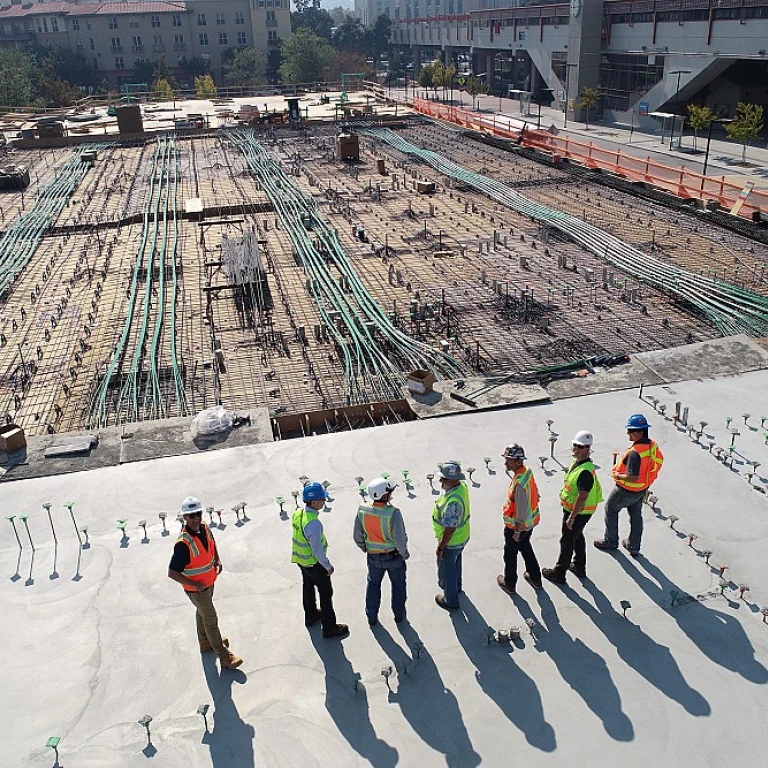
The Rise of Free Meeting Rooms
The Growing Demand for Complimentary Spaces
In recent years, the concept of free meeting rooms has gained significant traction among organizations looking to optimize their resource allocation. With budgets often constrained, access to complimentary spaces for meetings and events offers a valuable solution. These rooms, typically offered by public libraries, community centers, and some corporate branches, have become indispensable in facilitating collaboration without the burden of additional costs.
Many libraries across various counties have embraced this trend by opening up their study rooms and meeting spaces to the community. For example, in places like San Francisco, public library meeting rooms are frequently utilized for community events and branch meetings, accommodating different group sizes with varying room capacities. These free facilities include conference rooms, study rooms, and larger event spaces that can accommodate people for diverse functions.
This shift not only supports community engagement but also maximizes the usage of spaces during open hours, ensuring that venues are buzzing with activity. Furthermore, offering free access to these meeting spaces helps foster a sense of community, providing an essential resource for people who need a venue without the financial strain.
As more businesses and organizations recognize the utility of such spaces, the development and utilization of these free meeting rooms are set to expand further. For those interested in exploring more free resources for business optimization, this essential guide to free virtual assistant tools and resources can also be beneficial.
Advantages of Utilizing Free Meeting Spaces
The Upsides of Embracing Free Meeting Spaces
In today's fast-paced work environment, access to free meeting spaces has emerged as a valuable asset for businesses and community organizations. Utilizing these facilities can significantly enhance the functionality and productivity of a team. When companies and organizations opt for free meeting rooms, they unlock a wealth of advantages that can propel their operations to new heights.
Free meeting rooms, often housed in public libraries, community centers, and branch locations, offer flexibility in scheduling and utilization. With various room capacities, organizations can book based on their specific needs, whether it be a small study room for brainstorming sessions or a larger conference room for more extensive gatherings. Such options ensure that rooms accommodate groups of different sizes, thus maximizing efficiency.
Furthermore, opting for free meeting rooms plays a crucial role in fostering community interaction. These spaces are often made available by local authorities and public initiatives, creating a synergy between businesses and the community. They serve as a catalyst for local economic activity, as organizations hosting events or meetings in these venues may attract attendees who support surrounding businesses.
Free meeting spaces are also noted for their diversity, providing environments suitable for a variety of purposes. Whether it's a research session in a library's study room or a corporate meeting at a community branch meeting center, these spaces offer diverse opportunities. The community room at a public library, for instance, can transition seamlessly from a lecture hall to a casual meet-and-greet event, highlighting its adaptability.
Moreover, financial savings cannot be overstated. Leveraging free meeting spaces helps organizations reduce overhead costs associated with leasing dedicated office space. This is particularly beneficial for small businesses and startups that want to minimize expenses while maintaining a professional meeting environment. By eliminating rental fees, resources can be redirected to other essential areas, promoting sustainable growth and innovation.
In summary, the strategic use of free community venues, library meeting spaces, and conference rooms provides a hybrid solution that meets the diverse needs of modern enterprises. As these facilities often offer generous open hours to accommodate people's schedules, they reinforce an inclusive approach to meeting management. Embracing such options not only augments room capacity management but also extends networking potential, ensuring organizations remain agile and competitive in a dynamic market.
Challenges and Considerations
Overcoming Hurdles in Free Meeting Spaces
When considering the benefits of free meeting spaces, it's crucial to acknowledge potential challenges that arise. One primary consideration is room capacity. In many public spaces like a library or community center, the room accommodate constraints can limit the number of people a room can hold. For instance, conference or meeting rooms in smaller libraries often have a restricted room capacity, impacting the number of attendees at an event.
Another challenge is the availability of rooms during open hours. Popular spaces, such as those in a public library or library meeting rooms, can be booked quickly, especially in bustling locations like San Francisco. This demand requires community organizations to frequently update the room schedules and effectively contact those interested in bookings, often through systems such as email notifications or online booking platforms.
Furthermore, the adequacy of equipment and technological infrastructure is another consideration. Some free meeting spaces may not have the necessary technology for conference calls or presentations, requiring users to bring their own devices. This can be especially challenging when planning a branch meeting or organizing a formal conference room event. For insights into integrating technology efficiently, explore how the global coffee industry is mastering agile project management for applicable strategies.
Technology's Role in Optimizing Free Meeting Rooms
Integrating Technology to Enhance Meeting Room Utilization
The adoption of technology in free room spaces has become crucial for optimizing their use. Many organizations and public facilities, like libraries and community centers, are incorporating advanced tools to manage rooms effectively, ensuring that spaces like meeting rooms and study rooms are booked efficiently and operate at full capacity. Smart technology plays a crucial role in managing room capacity and improving efficiency. For example, systems that automate booking processes can ensure that spaces, such as conference rooms and event spaces, are utilized without conflicts, accommodating as many people as possible. These systems often include features that notify users via email about upcoming meetings or availability, helping manage branch meeting activities seamlessly. Furthermore, integrating digital displays outside meeting rooms in spaces such as the public library or a community room can provide real-time information on room capacity and availability. This allows people to make informed decisions about attending or booking spaces without the need for excessive contact or inquiries. In larger areas like san francisco, where meeting spaces are in high demand, leveraging cloud-based room management software can be instrumental. These platforms allow users to view open hours, check for available study rooms, and reserve spots remotely, creating a streamlined experience. The use of such technologies supports a truly collaborative environment and ensures that each room seats the appropriate number of people efficiently. By focusing on technological enhancements for room management, organizations can facilitate smoother event planning and community engagement, ultimately maximizing the benefits of free meeting spaces for all involved.Best Practices for Maximizing Meeting Room Efficiency
Enhancing Meeting Room Utilization
To fully leverage the benefits of free meeting spaces, it's crucial to maximize their efficiency. As office environments evolve, understanding how to effectively utilize available resources can make a difference in productivity and cost savings.
Optimize Scheduling and Room Capacity
Aligning meeting schedules and room capacity is essential. When organizing events, ensure that the room accommodates the expected number of attendees without overcrowding. Consider using room capacity management tools to avoid undersizing or oversizing your meeting space, particularly in high-demand areas like a public library meeting room or a community center space.
Technology Integration
Incorporate technology solutions to streamline the booking and use of meeting rooms. Automated booking systems can help manage room occupancy and availability, reducing conflicts and improving access control. These systems enable users to book spaces such as a library meeting room or conference room with ease, boosting overall efficiency.
Flexibility in Space Use
Encourage adaptable use of spaces. For instance, consider how a conference room could serve as a community room or a study space during its open hours when not in use. This flexible approach maximizes utility and serves diverse community needs, whether for events, study sessions, or informal gatherings.
Effective Communication and Coordination
Maintain clear communication channels. Use email or contact forms to facilitate easy coordination among team members or event coordinators planning to use these spaces. This approach is particularly beneficial for county branches or networks of community hubs that frequently host varied events.












